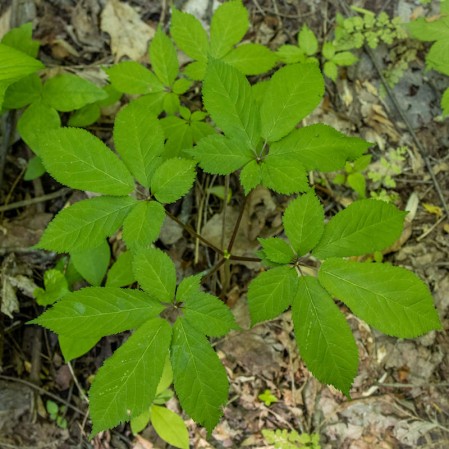Ginseng Seeds
Panax quinquefolia
- HOW TO GROW
- FAST FACTS
HOW TO GROW
Sowing: If storing the seed until planting, it should be kept in the refrigerator with consistent moisture and good air flow. Plant the seeds in late fall before the ground freezes, planting them 3/4" deep and 3" apart. Compact the soil and apply a light layer of leaf mulch over the surface. The seed should germinate in the spring. Keep in mind that this seed has erratic germination rates, and may not germinate until its second spring.
Growing: In their first several years of growth, these seedlings will only show a few leaflets as they concentrate on developing their root system. It usually takes 5-8 years for the plant to reach full maturity and begin producing the characteristic red berries. This plant flourishes in moist, well drained woodland soil with leaf mulch. Avoid planting in underbrush and shrubbery, since this can deprive the plants of nutrients and good air circulation; poor air circulation can cause blight. These plants may eventually self-seed.
Harvesting: Plants should be at least five years old before root harvesting is attempted. For easiest harvesting, moisten the soil or harvest after rainfall. Dig several inches from the plant to avoid damaging the root; carefully wash the roots without removing the hairs or scrubbing the surface.
Seed Saving: Gather the red fruits when they have reached full ripeness, usually in early fall. Crush the fruits, and remove the seeds from the pulp. Sow immediately, or keep moist in the refrigerator until planting.
FAST FACTS
Common Names: American Ginseng
Latin Name: Panax quinquefolia
Species Origin: US Native Wildflower
Type: Native Wildflowers
Life Cycle: Perennial
USDA Zones: 3, 4, 5, 6, 7, 8
US Regions: Midwest, Northeast, Southeast
Seeds per Ounce: 2,000
Stratification: Cold/Wet for 12 Weeks, then Warm/Wet for 12 Weeks - Repeat
Germination Ease: Stratify 24 Weeks
Sunlight: Part Sun, Shade
Height: 12 Inches
Color: White
Bloom Season: Blooms Early Summer, Blooms Late Summer
DESCRIPTION
HOW TO GROW
Sowing: If storing the seed until planting, it should be kept in the refrigerator with consistent moisture and good air flow. Plant the seeds in late fall before the ground freezes, planting them 3/4" deep and 3" apart. Compact the soil and apply a light layer of leaf mulch over the surface. The seed should germinate in the spring. Keep in mind that this seed has erratic germination rates, and may not germinate until its second spring.
Growing: In their first several years of growth, these seedlings will only show a few leaflets as they concentrate on developing their root system. It usually takes 5-8 years for the plant to reach full maturity and begin producing the characteristic red berries. This plant flourishes in moist, well drained woodland soil with leaf mulch. Avoid planting in underbrush and shrubbery, since this can deprive the plants of nutrients and good air circulation; poor air circulation can cause blight. These plants may eventually self-seed.
Harvesting: Plants should be at least five years old before root harvesting is attempted. For easiest harvesting, moisten the soil or harvest after rainfall. Dig several inches from the plant to avoid damaging the root; carefully wash the roots without removing the hairs or scrubbing the surface.
Seed Saving: Gather the red fruits when they have reached full ripeness, usually in early fall. Crush the fruits, and remove the seeds from the pulp. Sow immediately, or keep moist in the refrigerator until planting.
FAST FACTS
Common Names: American Ginseng
Latin Name: Panax quinquefolia
Species Origin: US Native Wildflower
Type: Native Wildflowers
Life Cycle: Perennial
USDA Zones: 3, 4, 5, 6, 7, 8
US Regions: Midwest, Northeast, Southeast
Seeds per Ounce: 2,000
Stratification: Cold/Wet for 12 Weeks, then Warm/Wet for 12 Weeks - Repeat
Germination Ease: Stratify 24 Weeks
Sunlight: Part Sun, Shade
Height: 12 Inches
Color: White
Bloom Season: Blooms Early Summer, Blooms Late Summer





